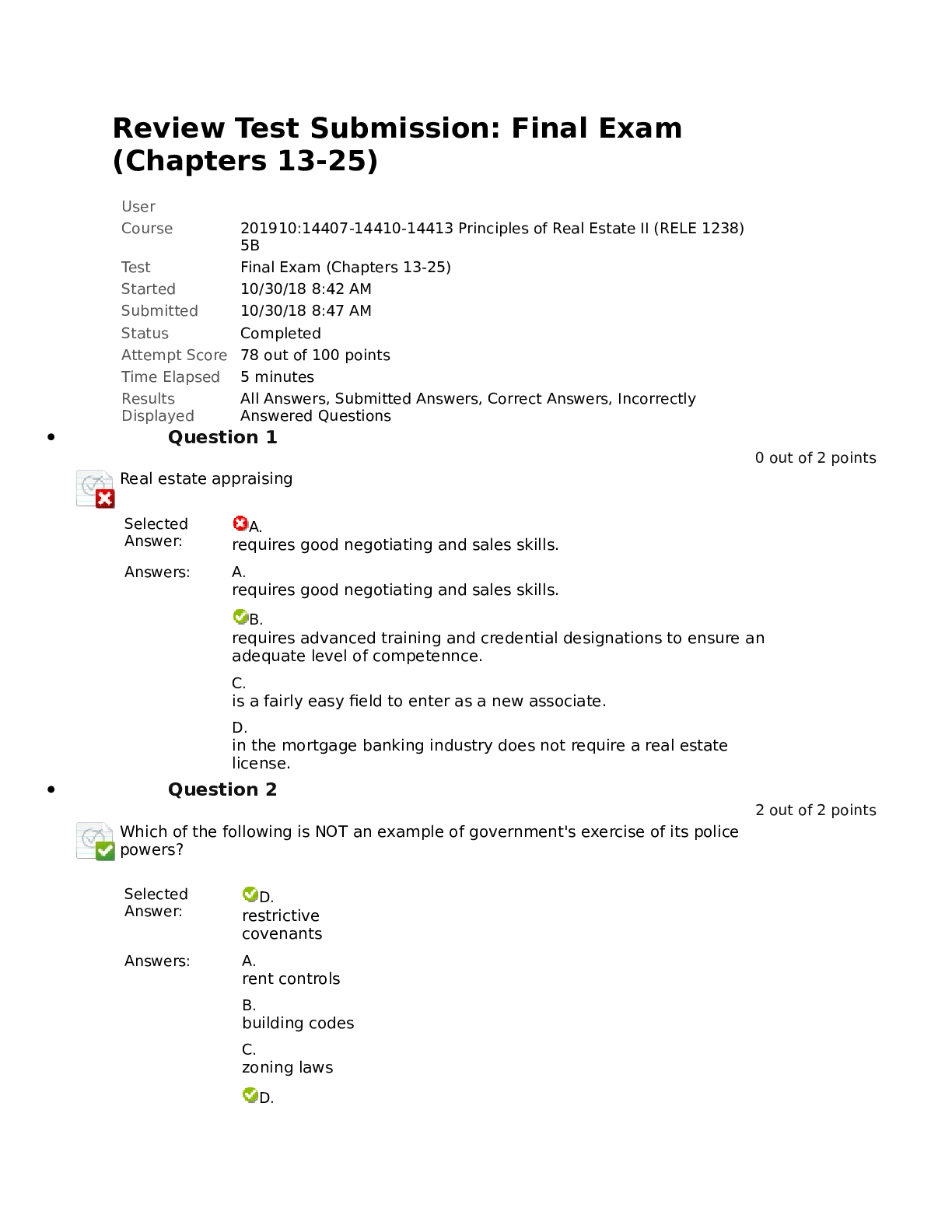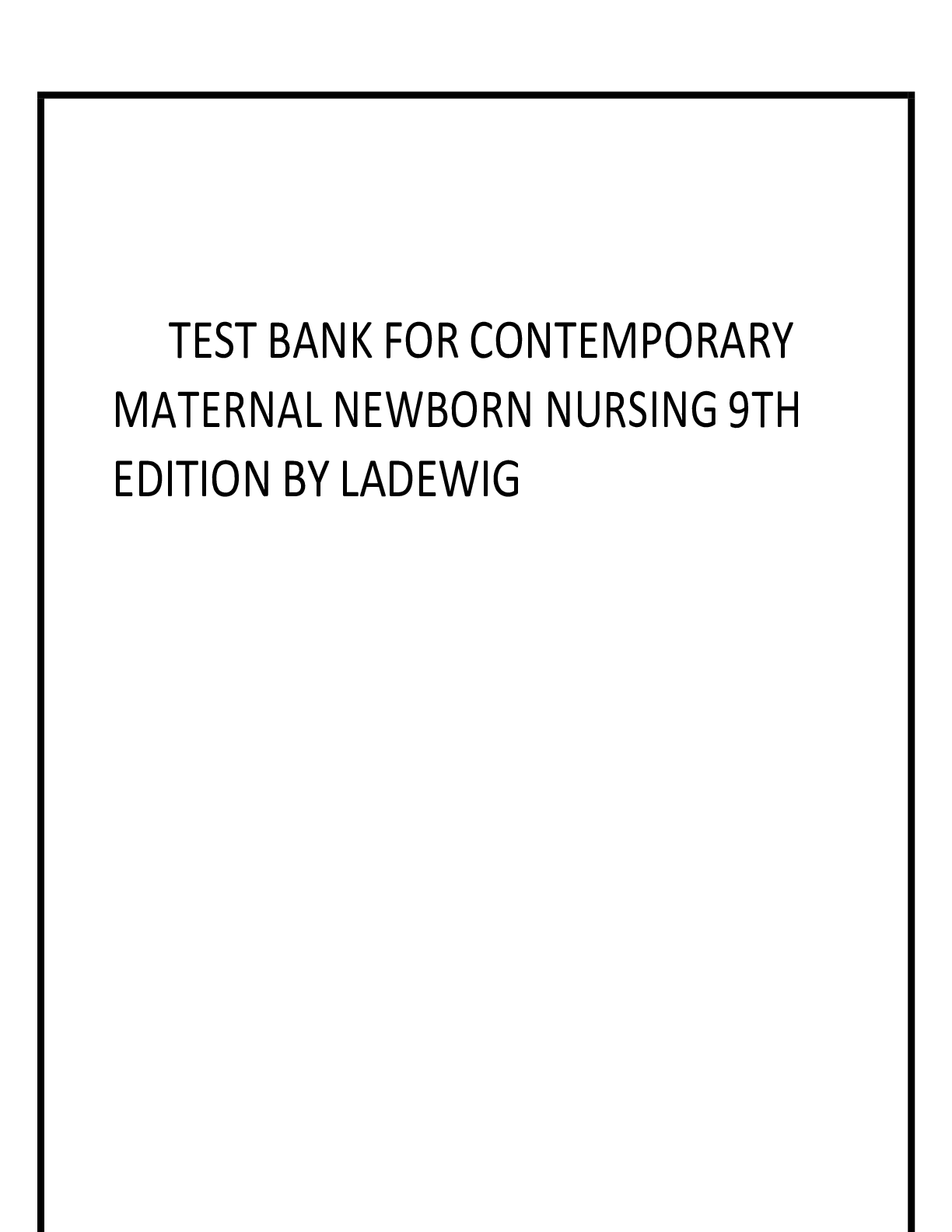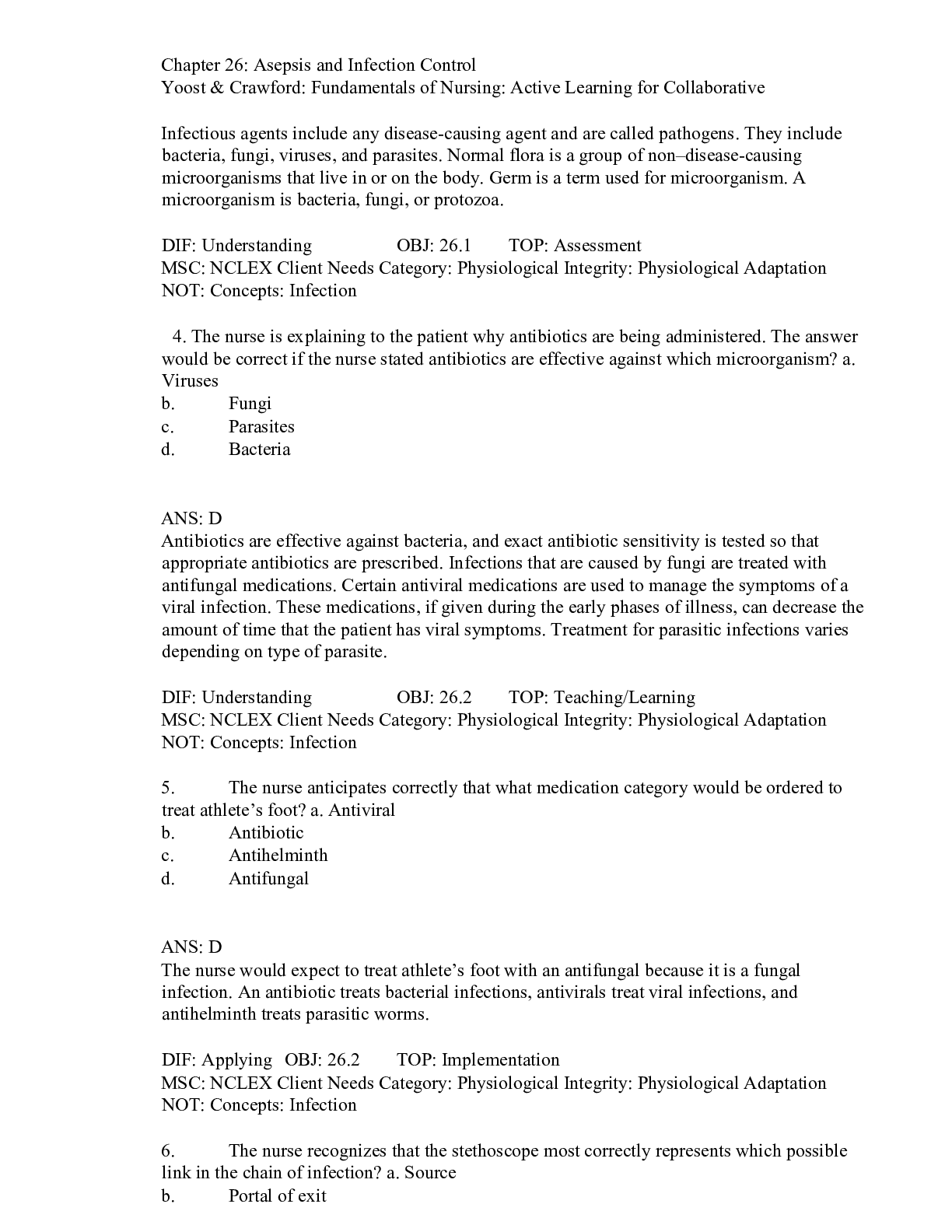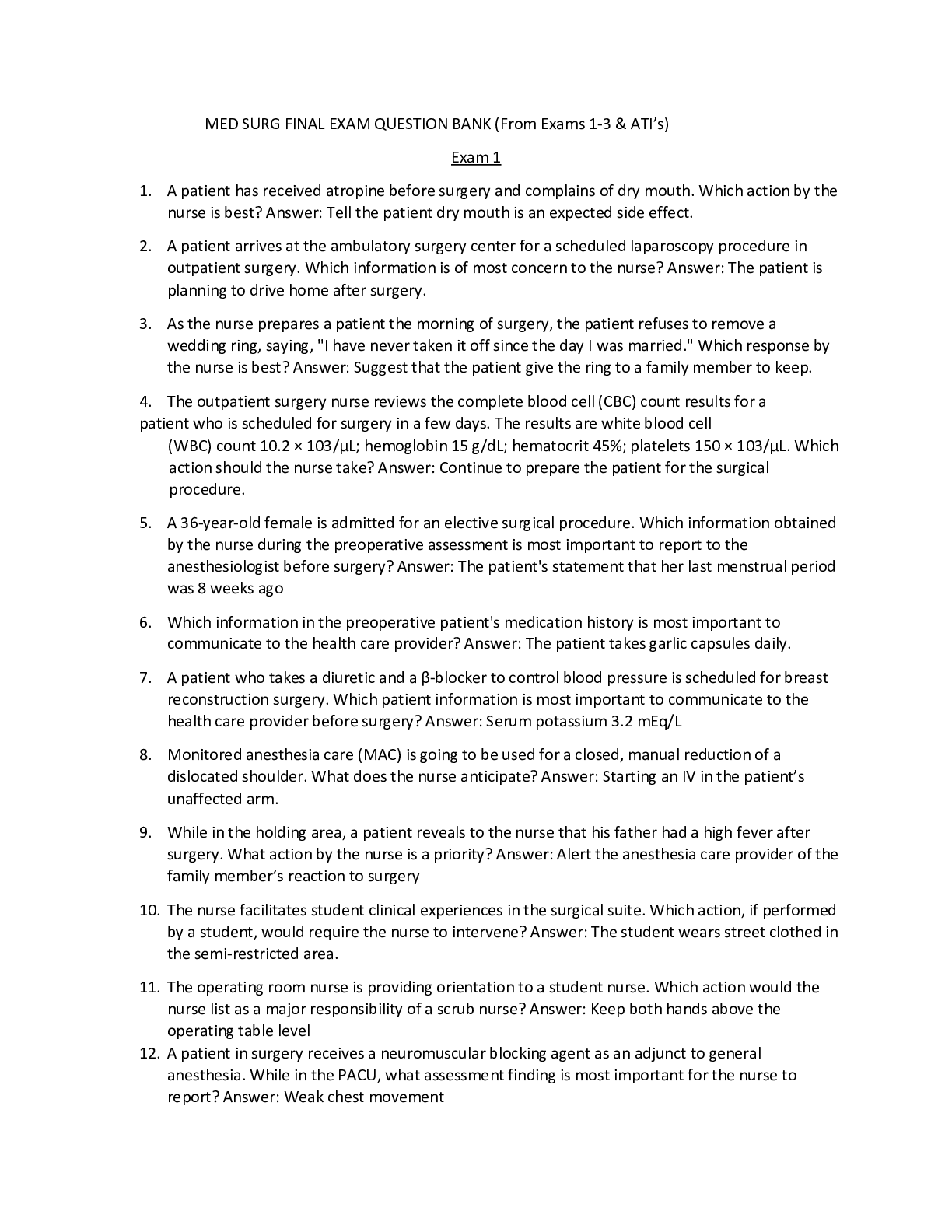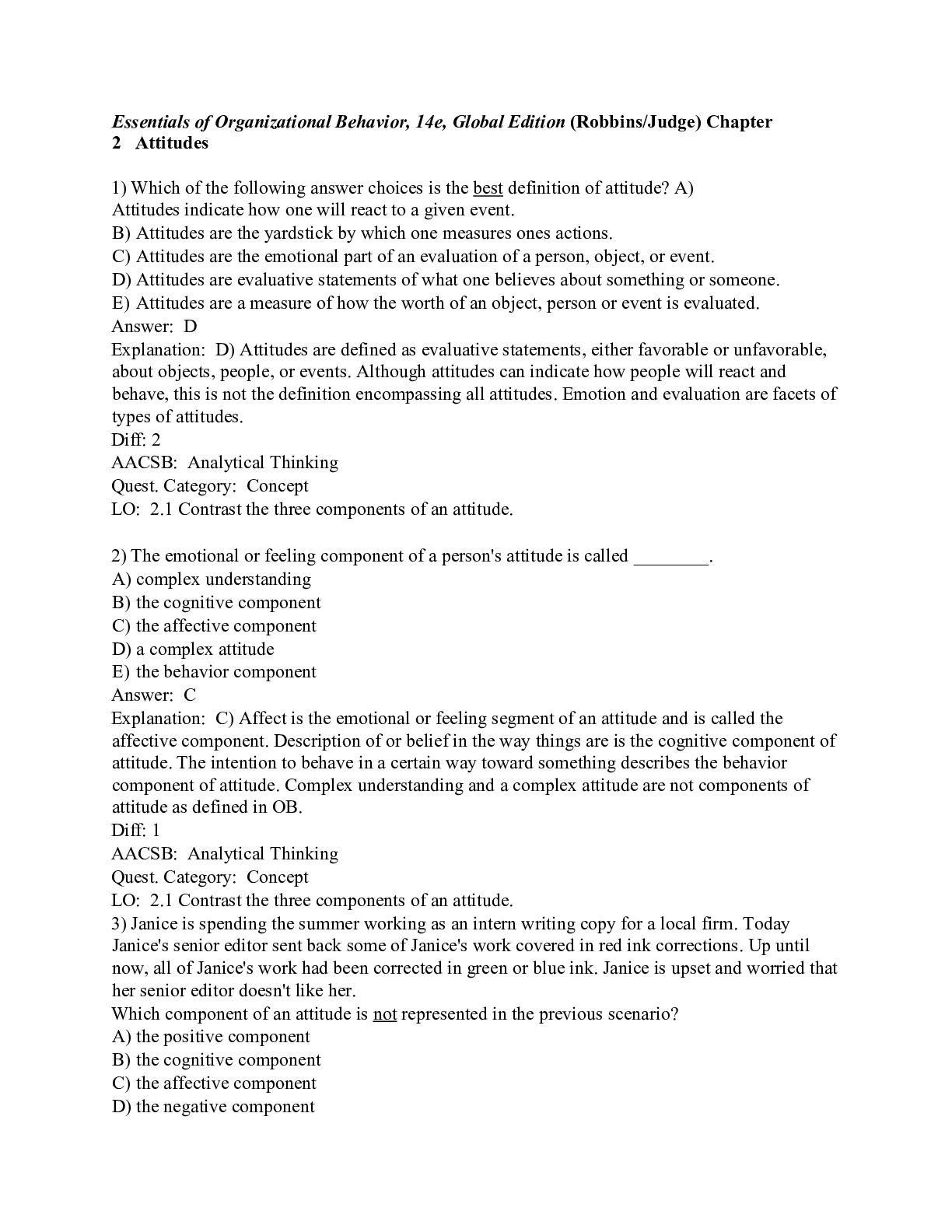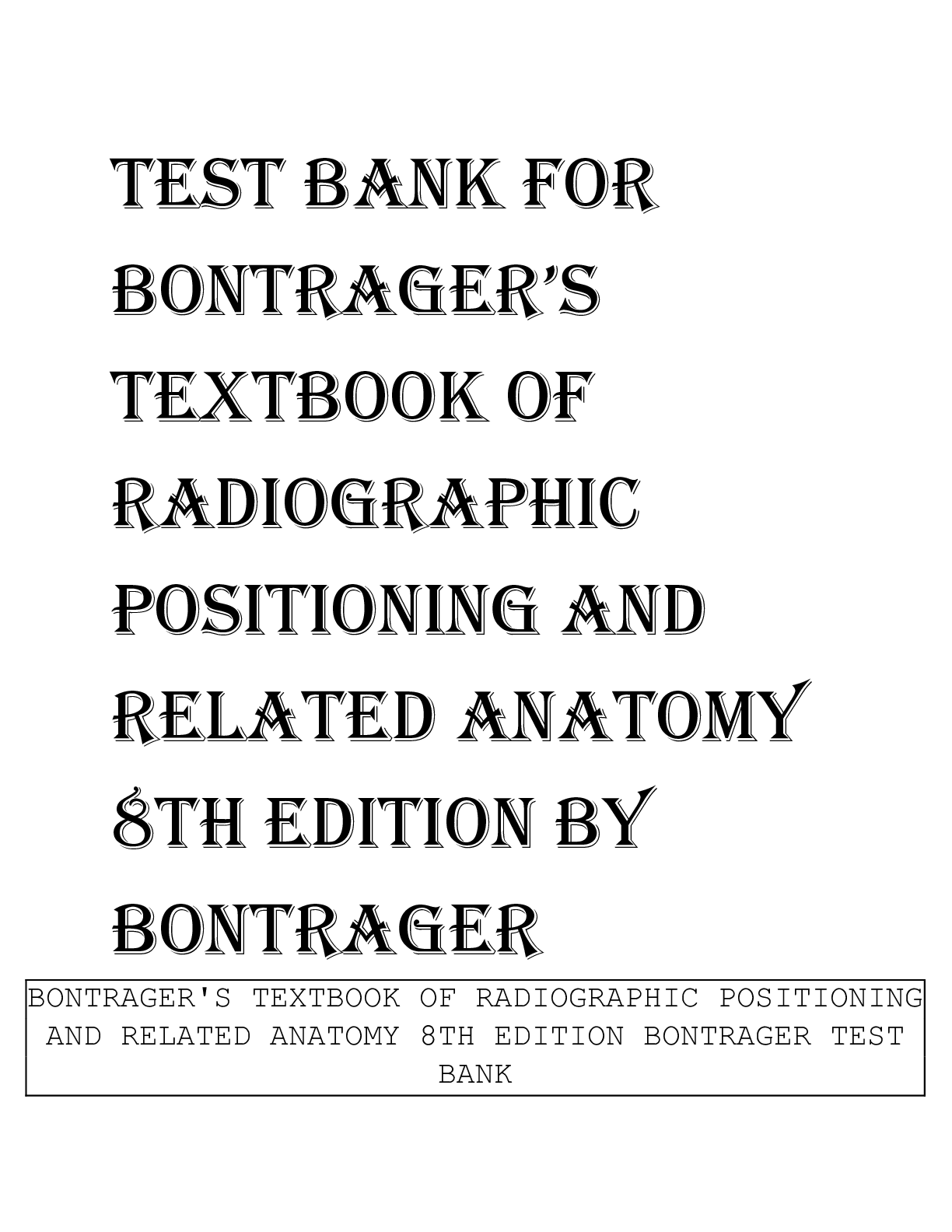Asepsis and Infection Control chapter 26
Document Content and Description Below
Chapter 26: Asepsis and Infection Control Yoost & Crawford: Fundamentals of Nursing: Active Learning for Collaborative Infectious agents include any disease-causing agent and are called pathogens. T... hey include bacteria, fungi, viruses, and parasites. Normal flora is a group of non–disease-causing microorganisms that live in or on the body. Germ is a term used for microorganism. A microorganism is bacteria, fungi, or protozoa. DIF: Understanding OBJ: 26.1 TOP: Assessment MSC: NCLEX Client Needs Category: Physiological Integrity: Physiological Adaptation NOT: Concepts: Infection 4. The nurse is explaining to the patient why antibiotics are being administered. The answer would be correct if the nurse stated antibiotics are effective against which microorganism? a. Viruses b. Fungi c. Parasites d. Bacteria ANS: D Antibiotics are effective against bacteria, and exact antibiotic sensitivity is tested so that appropriate antibiotics are prescribed. Infections that are caused by fungi are treated with antifungal medications. Certain antiviral medications are used to manage the symptoms of a viral infection. These medications, if given during the early phases of illness, can decrease the amount of time that the patient has viral symptoms. Treatment for parasitic infections varies depending on type of parasite. DIF: Understanding OBJ: 26.2 TOP: Teaching/Learning MSC: NCLEX Client Needs Category: Physiological Integrity: Physiological Adaptation NOT: Concepts: Infection 5. The nurse anticipates correctly that what medication category would be ordered to treat athlete’s foot? a. Antiviral b. Antibiotic c. Antihelminth d. Antifungal ANS: D The nurse would expect to treat athlete’s foot with an antifungal because it is a fungal infection. An antibiotic treats bacterial infections, antivirals treat viral infections, and antihelminth treats parasitic worms. DIF: Applying OBJ: 26.2 TOP: Implementation MSC: NCLEX Client Needs Category: Physiological Integrity: Physiological Adaptation NOT: Concepts: Infection 6. The nurse recognizes that the stethoscope most correctly represents which possible link in the chain of infection? a. Source b. Portal of exit c. Portal of entry d. Mode of transmission ANS: D The stethoscope would be a means for the pathogen to travel from source to host. The source is the reservoir or host. The portal of exit is where the pathogen escapes from the reservoir of infection, and the portal of entry is where the microorganism enters the susceptible host. DIF: Understanding OBJ: 26.2 TOP: Assessment MSC: NCLEX Client Needs Category: Safe and Effective Care Environment: Safety and Infection Control NOT: Concepts: Infection [Show More]
Last updated: 2 weeks ago
Preview 3 out of 8 pages
Instant download

Loading document previews ...
Buy this document to get the full access instantly
Instant Download Access after purchase
Add to cartInstant download
Reviews( 0 )
Document information
Connected school, study & course
About the document
Uploaded On
Jun 08, 2024
Number of pages
8
Written in
Additional information
This document has been written for:
Uploaded
Jun 08, 2024
Downloads
0
Views
16

